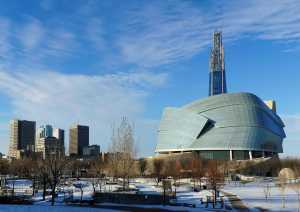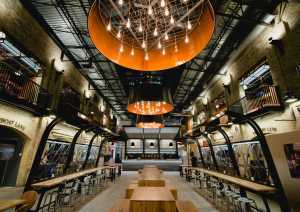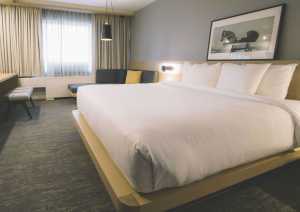Winnipeg is close to the geographic centre of Canada and its setting at the junction of the Red and Assiniboine Rivers has made it an important meeting place for more than 6,000 years.
Its isolated location fosters a strong sense of community and a drive to support locally owned businesses.
The result is a creative, friendly city with an independent spirit.
What to do

One of Winnipeg’s standout attractions is the Canadian Museum for Human Rights, which takes on the weighty subject of human rights in Canada and across the globe. It’s the first national museum to be built outside Ottawa and the only one in the world focused on human rights awareness. The museum takes on this challenging topic with smartly-curated interactive and multimedia displays. The building’s architecture, which blends themes of human rights with references to Canada’s landscape, is as impressive as the exhibits themselves.
Hop across the Red River to explore Manitoba’s francophone culture in St. Boniface, which is home to one of the country’s largest French-speaking communities outside of Quebec. Save time to browse the cool galleries and boutiques located in the Exchange District, one of North America’s most well-preserved early 20th-century neighbourhoods.
What to eat and drink

The Forks Market is a prime spot to start eating your way through the city. The market is named for its location at the Forks National Historic Site, which sits at the junction of the Red and Assiniboine Rivers. The site has been a meeting place for more than 6,000 years, first used as a trading point by Indigenous people and later by European fur traders. Over the past 30 years, it’s been transformed into a popular recreational and cultural site that’s enjoyed by visitors and locals alike.
Scott Bagshaw, one of Winnipeg’s most celebrated chefs, is behind Passero, a hip Italian restaurant. Although it’s part of the market, a separate sit-down dining area with distinctive wood-slat decor makes this restaurant feel like an intimate space all its own. The small-plates dinner menu is divided into six sections (antipasto, salad, raw, pasta, meat and seafood, and veggies) – the seafood and pasta options are particularly exceptional. Start with the roasted meatballs topped with tomato sauce, parmesan and crème fraiche. During lunch, Passero doubles as Corto, a casual takeaway counter with Italian sandwiches and coffee.
The Common, a drinks kiosk with 20 craft beers on tap and over a dozen wines available by the glass or flight, is at the centre of the market food hall. The beer lineup is ever-changing but always includes at least five regional brews (as Winnipeg’s craft beer scene grows, so does the Common’s roster of local taps); while the wine list is curated by one of Canada’s top female sommeliers, Véronique Rivest. The market’s food vendors encircle the Commons, so you can grab whatever you want to eat, order drinks and then enjoy it all at one of the communal tables in the fully licensed ground floor of the market or while you browse.
Where to stay

As its name implies, Inn at the Forks is located at the The Forks National Historic Site of Canada, right across from the market. Stepping into the Inn at the Forks after a wintery day in Winnipeg feels like sinking into a warm bath. While its name might conjure images of a small, rustic property, Inn at the Forks’ is anything but: Combining an upscale boutique style with natural materials like stone, wood and slate, the hotel exudes a cozy elegance.
Rooms have a bright, minimalist aesthetic, decorated with neutral colours, blonde woods and a few pops of vivid local artwork. SMITH restaurant serves up a solid menu of locally-sourced, seasonal fare. Linger here for breakfast before heading out for the day – we recommend the SMITHwich, a hearty breakfast sandwich featuring maple smoked cheddar, bacon and an egg tucked in a multigrain croissant and served with a side of hashbrowns – or they also have an impressive selection of scotches when you’re in the mood for a nightcap.
